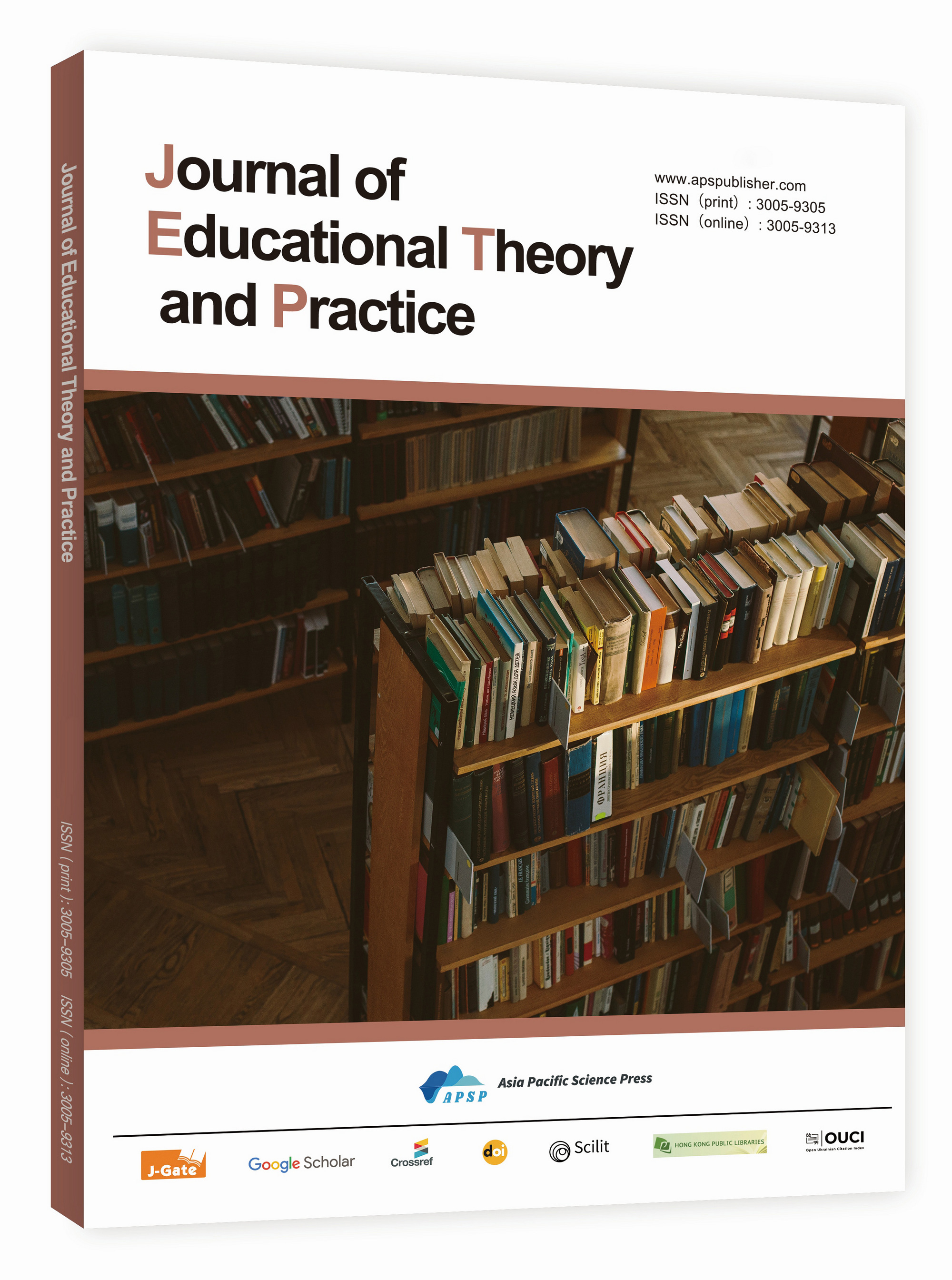From Human-Computer Interaction to Entangled Symbiosis: Research on the Theoretical Model and Real-World Applications of "Teacher-Student-Machine" Triadic Interaction in New Engineering under the Digital Intelligence Era
DOI:
https://doi.org/10.62177/jetp.v2i2.408Keywords:
New Engineering, Human-Computer Collaboration, eacher-Student Relationship, Digitalization of EducationAbstract
In the context of the digital intelligence era, the "teacher-student" binary interaction mode of traditional engineering teaching has gradually transformed into the "teacher-student-machine" triadic interaction. As the teacher-student interaction mediated by machine becomes formalized and instrumentalized, the transfer of interaction center leads to the virtualization and technologization of teacher-student interaction, and the lack of emotional substitution leads to the detachment and indifference of teacher-student interaction, there is an urgent need to examine the situation of teacher-student interaction from the perspective of the times, reflect on the limitations of teacher-student interaction, and search for breakthroughs and paths for the reconstruction of teacher-student interaction. This study focuses on this emerging interaction mode and explores how human-computer interaction evolves into an "entangled" symbiotic relationship. By analyzing the application of digital intelligence technology in engineering education, the study reveals its role in reshaping the roles of teachers and students, teaching content and methods, and educational models. The study finds that intelligent machines are not only tools, but also subjects in education and teaching, promoting the development of engineering education towards personalization and efficiency, and providing theoretical and practical references for the construction of new engineering disciplines.
Downloads
References
Zhang Yingqiang. (2024). Changes in higher education governance in the digital era: digital empowerment and its limitations. Fudan Education Forum,22(05),5-12.
Ma Luting. (2022). New engineering, new medicine, new agriculture, new liberal arts-from educational concept to paradigm change. China Higher Education, (12),9-11.
China Education News. Numerical Empowerment Shapes New Advantages in Higher Education Development [EB/OL].2025-02-17/2025-02-17.https://txs.youth.cn/xw/202502/t20250217_15831345.html
Huang Ronghuai, Datting: Intelligent Body Opens the Entrance for Education to Embrace Big Models [EB/OL].2025-02-15/2025-02-16.https://sli.bnu.edu.cn/a/xinwenkuaibao/yanjiudongtai/20250215/3419.html
Xiang Anling,License. (2023). Why human-computer interaction: Theoretical traceability, paradigm evolution and prospective trends. Journal of Global Media,10(05),88-105.
Christopher Frauenberger. 2019. Entanglement HCI The Next Wave? ACM Trans. Comput.-Hum. Interact. 27, 1, Article 2 (November 2019), 27 pages.
Licklider J C.Man-computer symbiosis. (1960).IRE transactions on human factors in electronics,(1),4-11.
Li Haifeng,Wang Wei. (2020). Human-Computer Learning Symbiosis - On the Construction of Basic Learning Forms in the Post-Artificial Intelligence Education Era. Journal of Distance Education,(2),46-55.
Shen Yang,Ji Hailin,Ye Xinyi,et al. (2023). Research on Human-Computer Interaction Technology in Virtual Reality Immersive Learning--Taking K12 Physics Experiment Teaching as an Example. Research on Electrochemical Education,44(10),87-94+120.
CSDN.AI Artificial Intelligence + Education: the role of the teacher from “teaching” to “wisdom tutor” gorgeous turn! [EB/OL].2024-08-22/2025-02-17.https://blog.csdn.net/2401_85375151/article/details/140685593
Talent Development Professional Committee of China Society for Educational Development Strategy. Digital transformation of education: profound change of education elements and reshaping of education ecology [EB/OL].2025-02-11/2025-02-17.https://www.acabridge.cn/hr/xueshu/202502/t20250211_2654212.shtml
Q Wang,F Guo,Yixin Zhang,et al. (2024). Research on deep classroom change based on big model. Open Education Research,30(04),104-112.
Lin Jianhua,Mei Liang,Li Yongmei. (2022). Symbiotic practice:Innovation of Co-op education model in Chongqing University. Research on Higher Engineering Education,(06),5-13.
WANG Meng, YAN Huaicheng, LU Yunkai. (2024). Research and Exploration of Artificial Intelligence-Driven Reform of New Engineering Education--Taking School of Information Science and Engineering of East China University of Science and Technology as an Example. Chemical Higher Education,41(06),13-19+101.
Ai Xing,Zhao Ruixue. (2020). Intelligent Learning in the Perspective of Human-Computer Collaboration:Logical Starting Point and Representation Form. Journal of Distance Education,(1),69-75.
Hao Xiangjun, Zhang Tianqi, Gu Xiaoqing. (2023). Human-computer collaborative learning in the age of intelligence: form, nature and development. China Electronic Education,(10),26-35.
Ma Xinling. (2021). Construction of “One Core, Two Wings, Two Wheels Driving” Practical Teaching Mode for “New Engineering Science”--Taking Process Equipment and Control Engineering Program of East China University of Science and Technology as an Example. Mechanics and Practice,43(02),273-277.
Liu Yuting,Zhang Chunmei,Pan Xiaomeng,et al. (2023). Exploration of student learning quality evaluation in the context of new engineering education. Shanghai Education Evaluation Research,12(02),51-55+67.
YANG Zongkai, WANG Jun, WU Main, et al. (2023). Exploration of the impact of ChatGPT/Generative Artificial Intelligence on education and coping strategies. Journal of East China Normal University(Education Science Edition),41(07),26-35.
FANG Haiguang,KONG Xinmei,LIU Huiwei,et al. (2024). Research on the cooperation game of human-computer collaborative education subject and its optimization strategy based on symbiosis theory. Research on Electrochemical Education,45(01),21-27.
Zhang Yannan. (2024). Research on the new mode of “teacher-student-machine” triadic interaction teaching based on artificial intelligence--Taking the “cloud creation” platform of Higher Education Press as an example. Wen Cun Reading Journal,(16),151-153.
Le Jieyu, Luo Chaoyang, Ding Jingshu, et al. (2020). Research on privacy protection mechanism and technology of educational big data. Big Data,6(06),52-63.
Tian Xianpeng. (2020). Privacy protection and open sharing: educational data governance change in the era of artificial intelligence. Research on Electrochemical Education,41(05),33-38.
Zhu Zhiting, Zhang Bo, Dai Ling. (2024). The Changing and Unchanging Ways of Smart Education Empowered by Digital Intelligence. China Education Informatization,30(03),3-14.
Liu Xinghua. In the age of digital intelligence, we need new quality education [EB/OL].2024-12-27/2025-02-18. https://news.eol.cn/xueshu/hui/202412/t20241227_2648487.shtml
Downloads
How to Cite
Issue
Section
License
Copyright (c) 2025 Hao He

This work is licensed under a Creative Commons Attribution-NonCommercial 4.0 International License.
DATE
Accepted: 2025-05-30
Published: 2025-06-09

















